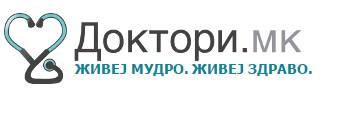JSER Policies
JSER Online
JSER Data
Frequency: quarterly
ISSN: 1409-6099 (Print)
ISSN: 1857-663X (Online)
Authors Info
- Read: 33731
|
ГЛАСОВЕН РАЗВОЈ КАКО ГЛАВЕН ПРЕДУСЛОВ КАЈ РАНОТО СТЕКНУВАЊЕ СПОСОБНОСТ ЗА ЈАЗИК И ГОВОР
Мариан ХОЛМ 1
Nägeleseestrasse 30, D – 79102 Freiburg 2 |
|
VOCAL DEVELOPMENT AS A MAIN CONDITION IN EARLY SPEECH AND LANGUAGE ACQUISITION
Marianne HOLM 1
Laufener Strasse 15, D - 79114 Freiburg 1 Nägeleseestrasse 30, D – 79102 Freiburg 2 |
|
Германија |
|
Germany |
|
1. Вовед |
|
1. Introduction |
|
Стручната литература не посветува многу внимание на гласот на децата со нарушен слух. Исто така, во литературата мошне малку може да се најде и за гласовниот развој кај дете со нормален слух. Интересот на повеќето автори е фокусиран на плачот на доенчињата и патолошките форми на развојот на гласот. Неодамна се објавија материјали за раната комуникација родител-дете и интеракцијата која вклучува вокализација и нејзината врска со развојот на говорот. |
|
Professional literature does not pay much attention to the voice of hearing impaired children. Furthermore, the literature only provides little information on the vocal development of children with normal hearing. The interest of most authors is focused on the cry of infants and the pathological forms of vocal development. Recently, there have been publications on the early parent-child communication and interaction which include vocalization and its relation to speech development. |
|
|
|
|
| 1.1 Педагошки испитувања |
|
1.1 Pedagogic researches
|
|
Опсежните испитувања на RIEDER (1963) на "предговорните, гласовни искази# на дете со нормален слух даваат детален преглед за многустраните гласовни форми на изразување во првата година на животот и укажуваат на истовременото и променливото "издиференцирање на постојната состојба и гласовниот исказ#. Тој тврди дека "говорниот глас се етаблира со првиот изговорен збор#. |
|
The complex RIEDER researches (1963) of the “pre-lingual, vocal expressions” of a child with normal hearing provide a detailed review of the multiple vocal forms of expression in the first year and indicate the simultaneous and variable “differentiation of current emotions and vocal expressions". He states that “the individual voice is established with the first spoken word". |
|
|
|
|
|
1.2 Медицински испитувања |
|
1.2 Medical researches |
|
SEDLACKOVA и SEDLACEK (1971) не можеле да утврдат значителни разлики при оценувањето на гласовите kaj децата со нормален слух и малите глуви деца во првата година од животот. Исто така, гласовите на глувите деца не се разликуваат и во првите гласовни искази кои повеќе се производ на случајност. Меѓутоа, во периодот меѓу втората и четвртата година, тие може да бидат значителна промена во гласовите во сонаграмските студии. |
|
SEDLACKOVA and SEDLACEK (1971) could not determine any difference in evaluating the voices of children with normal hearing and deaf children in the first year. The voices of deaf children also do not differ in the first vocal expressions, which are more a random product. But in the period between the second and fourth year of age, they could prove significant change in the voices in sonagraphic studies. |
|
NADOLECZNY претпостави, а FROESCHELS (1931) покажа дека: Супрасегменталните фактори - ритам, динамика и мелодија - претставуваат носители на значење уште од најраниот период до периодот пред изговарање на првиот збор. |
|
NADOLECZNY supposed and FROESCHELS (1931) described: The supra-segmental factors - rhythm, dynamics and melody – are carriers of meaning since early childhood and before words occur. |
||
|
|
|
|
||
|
1.3 Лингвистички испитувања |
|
1.3 Linguistic researches |
||
|
JACOBSON (1941/69) и LENNEBERG(1967) увиделе во предговорните гласовни продукции еден чисто физиолошки феномен во смисла на функционален тренинг на артикулаторните органи без обѕир на социјалната и лингвистичката околина.
|
|
JACOBSON (1941/69) and LENNEBERG (1967) assumed the pre-lingual vocal productions as a purely physiological phenomenon serving as a functional training of the articulatory organs, regardless to the social and linguistic environment. |
||
|
1.4 Развојно-психолошки испитувања |
|
1.4 Developmental-psychological researches |
||
|
Со оглед на тоа што создавањето на говорот "почнува уште во лулка#, М и H. PAPOUSEK (1989) испитувале со микроаналитички методи и го докажале значењето на предговорната комуникација. Тие собрале богат мaтеријал со податоци за "развојот на интерактивниот гласовен репертоар# меѓу вториот и петнаесеттиот месец на животот. Совпаѓајќи се со американската стручна литература, особено OLLER (1980), M. PAPOUSEK (1994) ги опишуваат стадиумите во кои едно дете, едно по друго гради претсилабички, силабички и ранолексички типови на вокализација. |
|
Regarding the fact that speech acquisition begins “in the craddle”, M. and H. PAPOUSEK (1989) conducted examinations with micro-analytic methods and proved the meaning of the pre-lingual communication. They gathered rich material with data regarding the "development of the interactive vocal repertoire" between the second and fifteenth month of the child’s life. In compliance with the American literature, especially OLLER (1980) M. PAPOUSEK (1994) describes the child’s stages; step by step; building pre-syllabic, syllabic and early lexical types of vocalization. |
||
|
|
|
|
||
|
2. Претставување на проблемот и методата |
|
2. Presentation of the problem and method |
||
|
Од 1991 година постои интердисциплинарна соработка меѓу S. Frischmuth како фонетичар, M. Holm, педаудиолошки говорен терапевт и професорот E. Loehle, доктор по медицина, шеф на одделот за педаудиологија/фонијатриjа на Универзитетската болница ОРЛ Фрајбург / Германија. Повод беше изненадувачки природниот гласовно-говорен развој на глуво родените деца и деца на кои правовремено е вграден кохлеарен-имплантат. Тие го споредија развојот на овие деца со децата со оштетен слух, кои биле обезбедени со слушни помагала и децата со нормален слух.
|
|
Since 1991, there is an interdisciplinary cooperation between S. Frischmuth, as a phoneticien, M. Holm, pedaudiological speech therapist and Professor E. Loehle, MD, Head of the Department Pedaudiology/Phoniatrics at the University Hospital ORL, Freiburg / Germany. The occasion was the surprisingly natural development of voice and speech in deaf born children, early provided with Cochlear implant. They compared the development in these children with hearing impaired children, early provided with hearing aids and children with normal hearing.
|
||
|
|
||||
|
|
|
|
||
|
2.1 Извештаи од случаи |
|
2.1 Case reports |
||
|
Ј. Д. - нормален слух |
|
J. D. - normal hearing |
||
|
Стадиум со два збора - Вежбање синтаксички структури - "Пивот граматика# |
|
Two-word-stage - practising of syntactical structures - „Pivot-Grammar” |
||
|
|
|
|
||
|
Претставување на резултатите |
|
Presentation of the results |
||
|
3.1 Силабичниот стадиум се карактеризира со постојана асоцијација согласка - самогласка, со навремена ритмичка регуларност (PAPOUSEK), наречена "канонично гугање # (OLLER, 1980). Ова треба да се појави меѓу петтиот и единаесеттиот месец кај детето со нормален слух.
Следната документација го покажува натамошниот развој на децата кои веќе ги опишавме во претходните стадиуми: |
|
3.1 The syllabic stageis characterized by a constant consonant-vocal-association with a timely rhythmical regularity (PAPOUSEK), called “canonical babbling” (OLLER, 1980). This should occur between the 5 and the 11 month in the child with normal hearing.
The following documentation presents the future development of children who were described in the previous stages: |
||
|
|
||||
|
|
|
|
||
|
4. Заклучок |
|
4. Conclusion |
||
|
Спознавањето на соспствениот глас и туѓите гласови е основен предуслов за континуиран развој на детскиот глас од плач до говор. Кај детето со нормален слух истовремено се развиваат гласот, говорот и јазикот, како што покажуваат и трудовите за предвербалниот развој на PAPOUSEK (1994). Тука посебно важна улога играат супрасегменталните фактори: ритмика, динамика и мелодика како први носители на значење. Во предвербалната фаза детето с# повеќе станува продуцент. |
|
The perception of the own voice, as well as the voices of others is a main condition for continuous development of the child’s voice from crying to speech. Children with normal hearing simultaneously develop voice, speech and language as presented by the studies of the preverbal development by PAPOUSEK (1994). In this context, the supra-segmental factors play an important role: Rhythm, dynamics and melody, as first carriers of meaning. The child’s role as producer is increasing in the preverbal stage. Increasing physiological competence enables the child to produce minimal rhythmic units, the syllabic stage of canonical babbling (OLLER 1980) which is the basis of all living languages and signifies the entrance into the melodic patterns of the mother tongue. |
||
|
Со зголемената артикулаторна способност, како и посложените форми на нагласување и интонација, детето постигнува стадиум од еден збор и стадиум од два збора, важни пресвртни точки во развојот на говорот и јазикот. |
|
With increasing articulatory competence, as well as more complex forms of emphasis and intonation, the child reaches the one-word-stage and the two-word-stage, significant milestones in the development of speech and language. |
||
|
|
|
|
||
|
Citation:Holm M, Frischmuth S. Vocal Development as a Main Condition in Early Speech and Language Acquisition. J Spec Educ Rehab 2005; 6(1-2):91-98. |
||||
|
|
||||
|
Литература / References |
|
|
||
|
1. Eilers R, Dk Oller. Infant vocalization, and the early diagnosis of severe hearing impairment. Mosby-Year-Book Inc. from the Mailman Center for Child Development and the University of Miami, Florida, 1994. |
|
11.Loehle E. Schreien und frühkindliche Sprachentwicklung. In: Th. Hellbrügge, Der unruhige Säugling. In: Sozialpädiatrie, Bd.13, Hansisches Verlagskontor, Lübeck, 1989. |
||
Share Us
Journal metrics
-
 SNIP 0.059
SNIP 0.059 -
 IPP 0.07
IPP 0.07 -
 SJR 0.13
SJR 0.13 -
 h5-index 7
h5-index 7 -
 Google-based impact factor: 0.68
Google-based impact factor: 0.68
Related Articles
10 Most Read Articles
- PARENTAL ACCEPTANCE / REJECTION AND EMOTIONAL INTELLIGENCE AMONG ADOLESCENTS WITH AND WITHOUT DELINQUENT BEHAVIOR
- RELATIONSHIP BETWEEN LIFE BUILDING SKILLS AND SOCIAL ADJUSTMENT OF STUDENTS WITH HEARING IMPAIRMENT: IMPLICATIONS FOR COUNSELING
- EXPERIENCES FROM THE EDUCATIONAL SYSTEM – NARRATIVES OF PARENTS WITH CHILDREN WITH DISABILITIES IN CROATIA
- INOVATIONS IN THERAPY OF AUTISM
- AUTISM AND TUBEROUS SCLEROSIS
- THE DURATION AND PHASES OF QUALITATIVE RESEARCH
- REHABILITATION OF PERSONS WITH CEREBRAL PALSY
- DISORDERED ATTENTION AS NEUROPSYCHOLOGICAL COGNITIVE DISFUNCTION
- HYPERACTIVE CHILD`S DISTURBED ATTENTION AS THE MOST COMMON CAUSE FOR LIGHT FORMS OF MENTAL DEFICIENCY
- DIAGNOSTIC AND TREATMENT OPTIONS IN AUTISTIC SPECTRUM DISORDERS – AN OVERVIEW
















